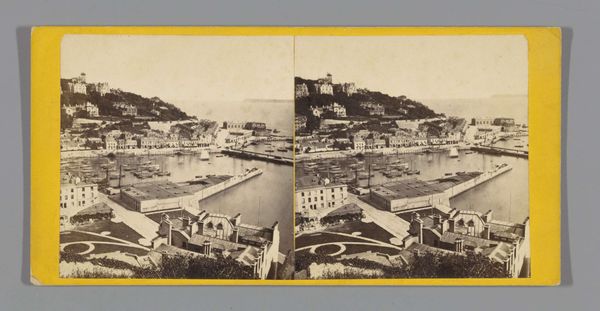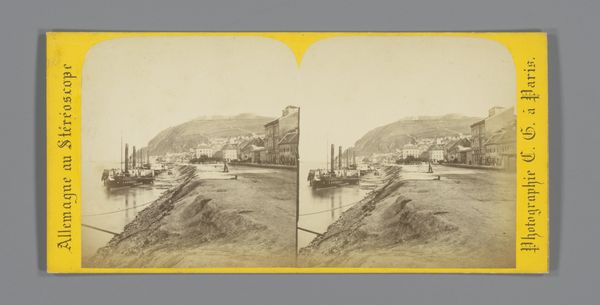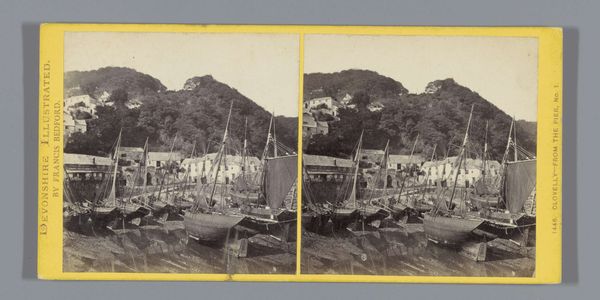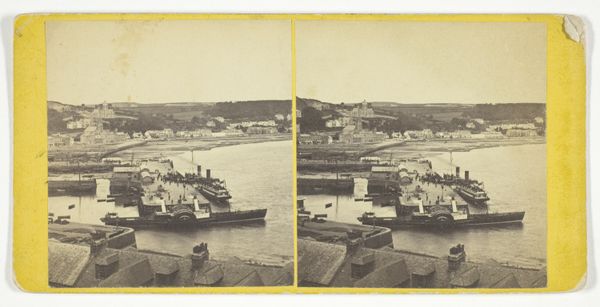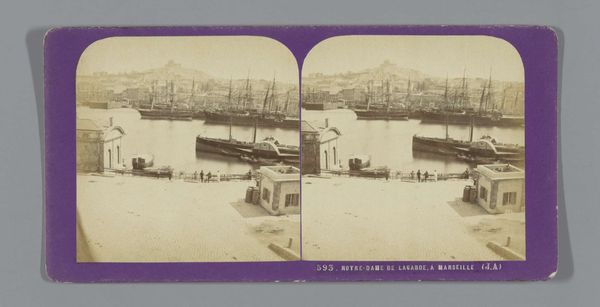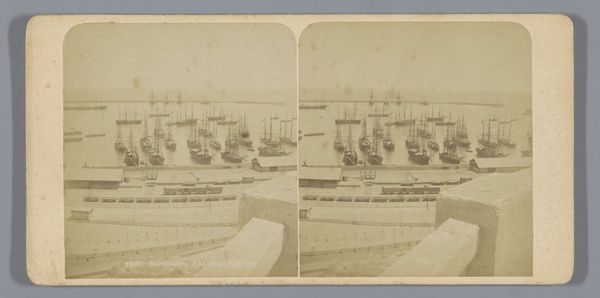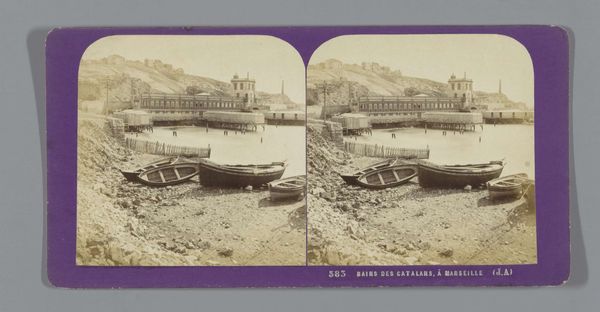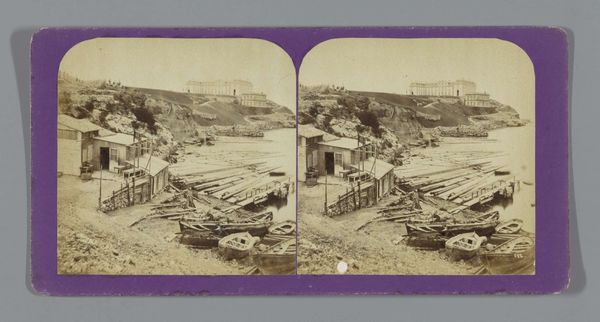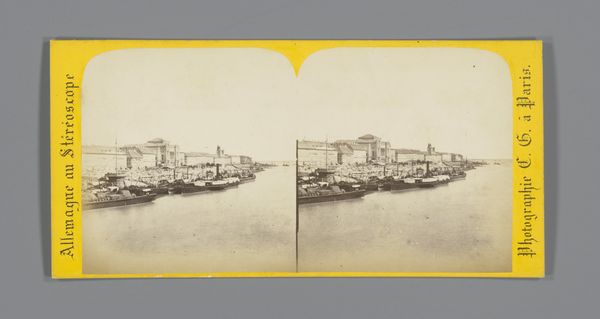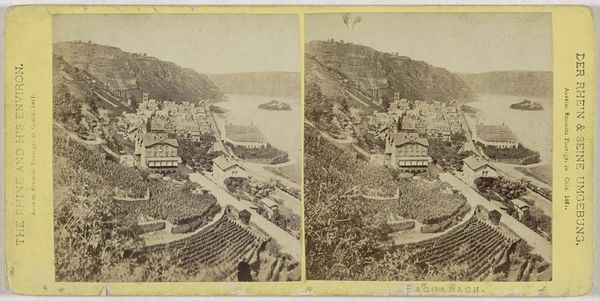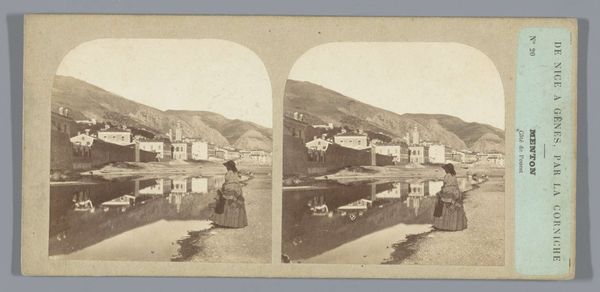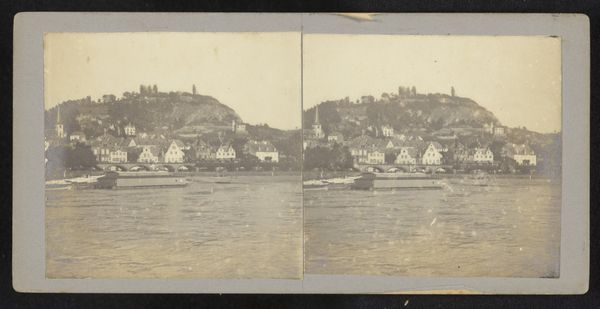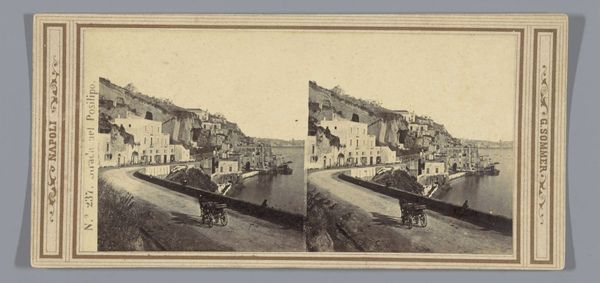
Dimensions: height 85 mm, width 170 mm
Copyright: Rijks Museum: Open Domain
Editor: This is "Gezicht op Ventnor," a gelatin silver print by J.W. Nicholson, dating from around 1850 to 1880. It feels quite formal, almost like a record rather than a romantic view. What do you see in this piece? Curator: Well, beyond the immediate representation of Ventnor, I see a potent encapsulation of Victorian ideals and anxieties. Photography in this era became deeply entangled with colonialism and industrial progress. Consider, for instance, how this seemingly objective view of a seaside town is structured. Who benefits from this representation, and whose perspectives are excluded? Editor: That’s an interesting angle! I was just seeing it as a landscape. So, are you suggesting the image might not be so neutral? Curator: Exactly! Think about the burgeoning tourist industry in Ventnor at the time. Photography played a crucial role in shaping perceptions of these "exotic" locations. This image, likely mass-produced for consumption, romanticizes a location while likely overlooking the social realities experienced by the local population. What are your thoughts on who had access to the places in the photograph? Editor: Hmmm, good point. I didn't consider how accessible the locations actually were. Now that you mention it, it seems curated, presented to entice specific people. Did landscape photography affect how people considered nature at that time? Curator: Absolutely. Photography played a central role in codifying nature. By focusing on "picturesque" views and erasing evidence of exploitation or struggle, photographs helped normalize an unequal distribution of land and resources, offering an idyllic vision in line with the interests of a certain societal class. It shaped environmental narratives that, to some extent, persist to this day. Editor: Wow, I hadn't thought about it like that at all! I really appreciate how you positioned this image within that social context; it certainly changes how I perceive the image and photography in general. Curator: And hopefully, prompts you to consider the role of visual media as a very powerful agent for change.
Comments
No comments
Be the first to comment and join the conversation on the ultimate creative platform.
